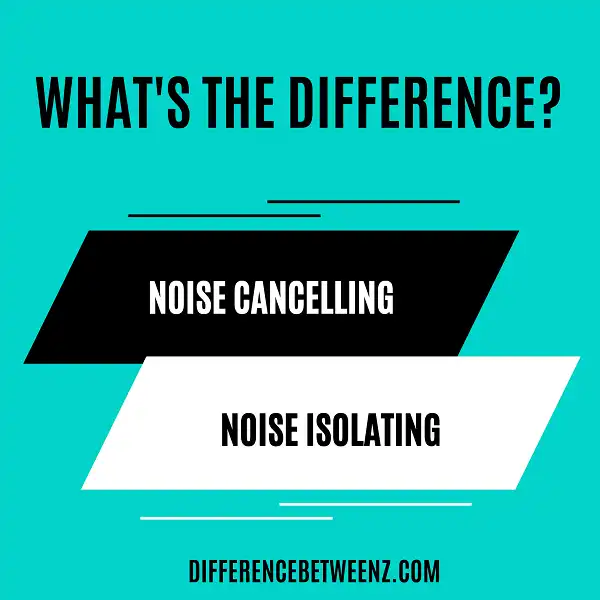When you’re looking for headphones, you’ll likely come across two types of noise-cancelling headphones: noise cancelling and noise isolating. But what’s the difference? And which type is right for you? Here’s a breakdown of the key differences between noise cancelling and noise isolating headphones.
What is Noise Cancelling?
Noise cancelling is a technology that is used in headphones and earbuds to reduce unwanted ambient sounds. Noise-cancelling headphones work by creating a sound wave that is the opposite of the incoming noise, which cancels out the noise. Noise cancelling earbuds work in a similar way, but they use miniaturized microphones to sense the incoming noise and then create an opposite sound wave. Noise cancelling technology can be effective at reducing low-frequency sounds, such as the sound of an aeroplane engine, but it is not as effective at reducing higher frequency sounds, such as human voices. Noise-cancelling headphones and earbuds are often used by people who work in noisy environments, such as office workers and call centre employees. Noise cancelling technology can also be used in other applications, such as reducing noise from construction equipment or reducing road noise for drivers.
What is Noise Isolating?
Noise isolating headphones are designed to reduce the amount of ambient noise that enters the ear canal. This is achieved by creating a tight seal between the headphone cups and the head, which blocks out external noise. Noise-isolating headphones are often used in noisy environments, such as on aeroplanes or in busy offices. They can also be useful for people who are sensitive to background noise, as they can help to reduce distractions. Noise-isolating headphones are not to be confused with noise-cancelling headphones, which use active noise cancellation technology to actively cancel out external noise. Noise-cancelling headphones are more effective at reducing ambient noise than noise-isolating headphones, but they can also be more expensive.
Difference between Noise Cancelling and Noise Isolating
The terms Noise Cancelling and Noise Isolating are often used interchangeably, but they actually refer to two different things. Noise Cancelling refers to the technology that is used to reduce background noise, such as the hum of an aeroplane engine. Noise Isolating, on the other hand, physically blocks out the sound by creating a seal between the ear and the outside world. Both technologies can be extremely effective in reducing noise, but they work in different ways. Noise Cancelling is best for constant low-frequency noise, while Noise Isolating is more effective for sporadic high-frequency noise. As a result, it is important to choose the right type of Noise Cancelling or Noise Isolating headphones based on your specific needs.
Conclusion
So, what’s the difference between noise cancelling and noise isolating headphones? The answer is simple. Noise cancelling headphones work by detecting outside sound waves and producing inverse waves that cancel out the original sound. This is done with a microphone in the ear cup that picks up surrounding noise. Noise-isolating headphones, on the other hand, rely on creating a tight seal between your ear and the headphone to block out external sounds. If you’re looking for complete silence while you work or study, then noise-cancelling headphones are probably your best bet. If you just want to reduce distractions without completely shutting out your environment, then noise-isolating headphones may be a better option for you.


